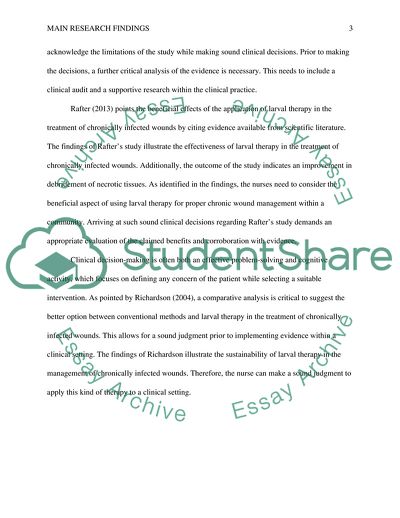Main research findings;application to nursing practice and clinical Assignment - 1. https://studentshare.org/nursing/1878154-main-research-findings-application-to-nursing-practice-and-clinical-decision-making
Main Research findings;Application to Nursing Practice and Clinical Assignment - 1. https://studentshare.org/nursing/1878154-main-research-findings-application-to-nursing-practice-and-clinical-decision-making.


